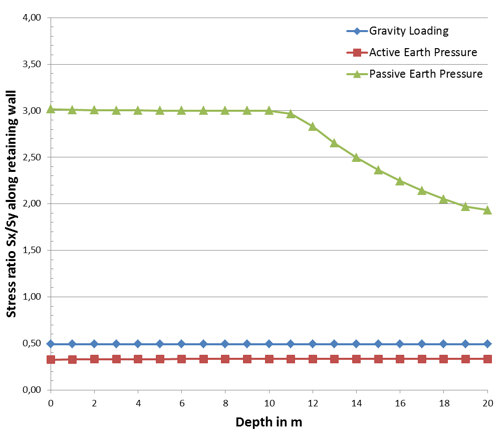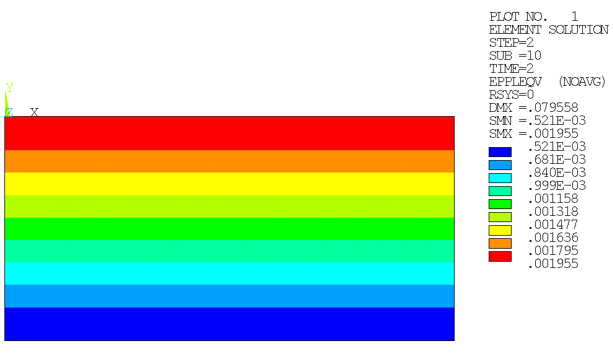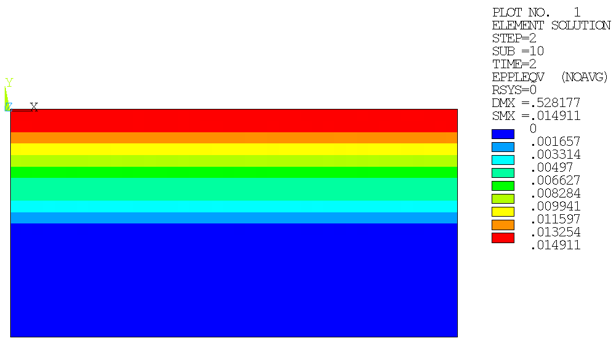The resulting pressure distributions on the left retaining wall are determined using the coefficient of lateral earth pressure:
The coefficient of lateral earth pressure for the in situ stress state is consistent with the relationship using Poisson’s ratio as:
Figure 48.5: Horizontal Displacement for Active Pressure Load Step (Negative Displacement of Retaining Wall in x-Direction)
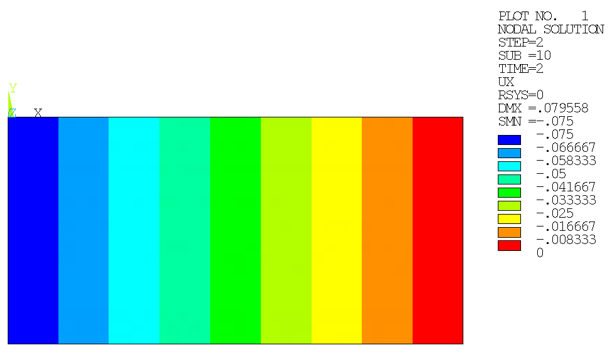
For this type of problem, the coefficient of lateral earth pressure for an active stress state is solely a function of the friction angle,[3] so that:
The result of the nonlinear soil structure analysis is comparable to this value. Also, in most of the domain, consistent with theoretical assumptions. The
failure mode is shearing-dominated.
Equivalent plastic strains decrease with increasing hydrostatic pressure:
Passive earth pressure is the amount of stress that a soil structure can exert on an actively loaded structure that interacts with the soil. It is generally much higher than the in situ stress state. The following figure shows the horizontal movement of a typical passive loading condition:
Figure 48.7: Horizontal Displacement for Passive Pressure Load Step (Positive Displacement of Retaining Wall in x-Direction)
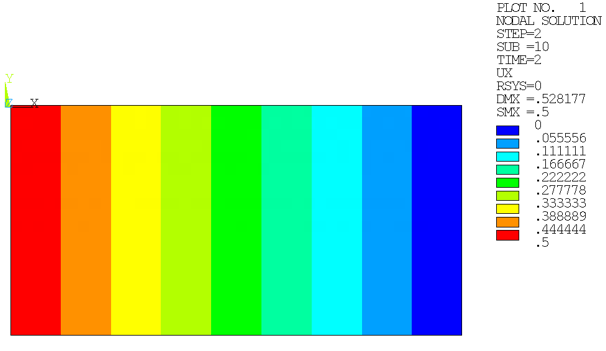
Using failure-state analysis,[3] the coefficient of lateral earth pressure for this passive stress state is again a function of the friction angle, so that:
For the passive stress state, therefore, the horizontal stress components are approximately 3x the vertical in situ stress along the retaining wall:
The soil undergoes plastic deformation to a depth of approximately 10 m. Due to the large hydrostatic stress state in the bottom region, no plastic strains develop.
The results of the at-rest pressure step, the active pressure step, and the passive pressure step are consistent with theoretical assumptions. The analysis correctly predicts the complex stress state of this soil-structure interaction problem.



